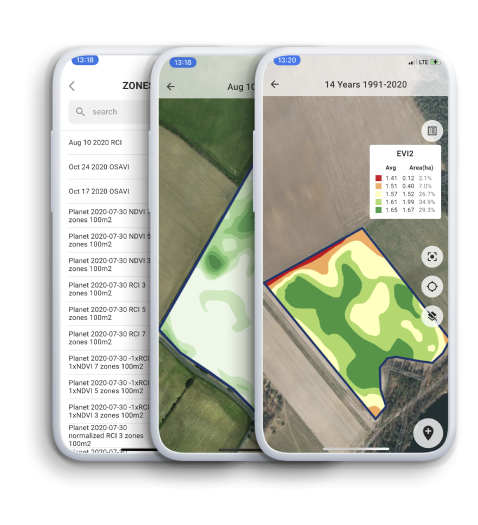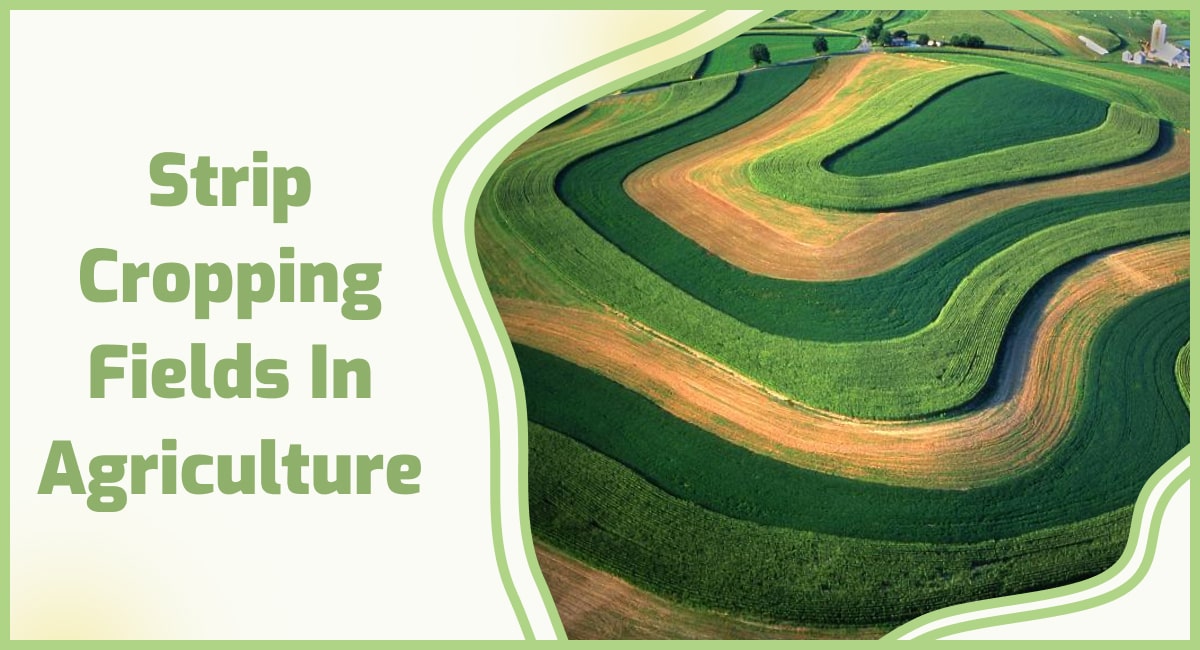In an era where technological advancements are transforming every facet of our lives, agriculture remains no exception. Machine Learning (ML), a subset of Artificial Intelligence (AI), has revolutionized the agricultural landscape, giving rise to Precision Agriculture (PA).
This approach leverages data-driven insights to optimize agricultural practices, enhancing crop yields, resource efficiency, and sustainability. By analyzing vast amounts of data, ML algorithms enable farmers to make informed decisions regarding planting, irrigation, fertilization, and pest control.
What is Machine Learning?
Machine Learning refers to the ability of computers to learn from data and improve their performance over time without being explicitly programmed. It involves algorithms that enable systems to identify patterns, make predictions, and take actions based on large datasets.
Its importance lies in its ability to process and make sense of vast amounts of data at unprecedented speeds. This has led to advancements in predictive analytics, enabling businesses to make informed decisions, improve customer experiences, and optimize operations.
In healthcare, ML aids in early disease detection, treatment planning, and drug discovery. Moreover, autonomous vehicles rely on machine learning algorithms to navigate complex environments and make split-second decisions.
According to a report by Grand View Research, the global ML market size is expected to reach USD 96.7 billion by 2027, with industries like healthcare, finance, and e-commerce driving its growth.

For instance, a study published in the journal Nature Medicine demonstrated how a machine learning algorithm could predict heart disease outcomes more accurately than traditional methods by analyzing patient data.
In addition, the World Economic Forum predicts that by 2025, 50% of all work tasks will be handled by machines, further highlighting the increasing integration of ML into various sectors. In 2020, Google’s DeepMind also showcased the potential of ML in biology by predicting protein structures with remarkable accuracy, a long-standing challenge in the field.
Machine Learning and Precision Agriculture
Precision agriculture is the application of technology to create a data-centric approach to farming. It involves using various technologies, including sensors, drones, and satellite imagery, to collect real-time data about crop health, soil conditions, weather patterns, and more.
These technologies allow farmers to collect and analyze data regarding soil composition, weather patterns, and crop growth in real-time. By gathering precise information, farmers can make informed decisions to optimize their practices.
All of these developments are made possible by utilizing ML to process data gathered from these technologies. According to a report by Grand View Research, the precision agriculture market size is projected to reach $12.9 billion by 2027.
Countries like the United States, Canada, Australia, and parts of Europe have been early adopters of this technology. For instance, the use of drones equipped with ML algorithms has become a common sight in American farms, aiding in crop monitoring and disease detection.

Furthermore, researchers at the University of California, Davis, utilized ML algorithms to analyze data from sensors placed in vineyards. This analysis allowed for precise irrigation and fertilization adjustments, resulting in a 20% increase in grape yield and a significant reduction in water usage.
In another example, an Indian start-up developed an ML-based app that uses image recognition to diagnose crop diseases. Farmers can take pictures of their crops and receive real-time advice on disease management. This technology has empowered farmers to make informed decisions, preventing potential crop losses.
Components of Machine Learning in Precision Agriculture
Machine learning has become an integral part of precision agriculture, contributing to its effectiveness and efficiency. The components of ML in precision agriculture encompass various stages and processes that enhance decision-making and optimization. Here are the key components that constitute the role of machine learning in this field:
1. Data Collection and Preprocessing:
The foundation of machine learning in precision agriculture rests on the quality and diversity of data collected. Sensors, drones, satellites, and IoT devices gather a vast array of data such as soil moisture, temperature, crop health, and weather conditions.
Before any analysis can occur, the data undergoes preprocessing, involving cleaning, transformation, and feature extraction. This step ensures that the input data is accurate and relevant for subsequent machine learning algorithms.

Example: An agricultural drone surveys a maize field, capturing multispectral images. These images are processed to derive vegetation indices, reflecting crop health and nutrient levels. Preprocessing involves aligning the images and removing any artifacts, leading to accurate insights.
2. Feature Selection and Engineering:
Feature selection involves identifying the most pertinent variables from the collected data. ML models perform optimally when fed with relevant features.
Feature engineering, on the other hand, involves creating new features or transforming existing ones to enhance the model’s performance. For instance, combining soil moisture and temperature readings could provide valuable insights into irrigation scheduling.
Example: By integrating satellite-derived data on soil moisture and historical yield data, a ML model can predict crop yield. Feature engineering could involve creating a new variable—like the ratio of soil moisture to previous yield—to enhance prediction accuracy.
3. Machine Learning Algorithms:
This form the heart of the predictive and prescriptive capabilities of precision agriculture. These algorithms are classified into supervised, unsupervised, and reinforcement learning categories.
Supervised algorithms, such as regression and classification, are used for tasks like crop yield prediction and disease classification.
Unsupervised techniques like clustering and dimensionality reduction help in pattern recognition and anomaly detection, while reinforcement learning aids in optimizing tasks like autonomous machinery navigation.

Example: Using historical data on pest occurrences and environmental factors, a support vector machine (SVM) can classify whether a field is at risk of a particular pest infestation, enabling timely intervention.
4. Model Training and Validation:
Training machine learning models involves exposing them to historical data to learn patterns and relationships. This training is followed by validation, where the model’s performance is assessed on new, unseen data.
The use of techniques like cross-validation ensures that the model’s generalizability is tested, ensuring it can handle varying conditions and datasets.
Example: A neural network learns to predict optimal irrigation schedules by analyzing historical crop health, soil moisture, and weather data. Validation is performed using a subset of data not used during training to assess its real-world applicability.
5. Model Evaluation and Selection:
Model evaluation is crucial to ensure the chosen algorithm performs optimally. Metrics such as accuracy, precision, recall, F1-score, and ROC curves are used to assess the model’s performance.
The selected model should strike a balance between overfitting (fitting noise in data) and underfitting (missing important patterns).
Example: A disease classification model is evaluated on its ability to correctly identify infected plants (true positives) and avoid false alarms (false positives). An ideal model minimizes both types of errors.
6. Deployment and Integration:
Deploying machine learning models into real-world scenarios involves integrating them into precision agriculture systems. This can be done through APIs, software platforms, or even embedded directly into agricultural machinery.
Integration ensures that the insights generated by ML are actionable and readily available to farmers and agronomists.
Example: A predictive model recommending nitrogen fertilization is integrated into a smart irrigation system. The model’s suggestions adjust the irrigation schedule based on real-time soil nutrient levels.
7. Continuous Learning and Adaptation:
The agricultural landscape is dynamic, with factors like climate change and evolving pest populations affecting crop health. ML models need to adapt to these changes over time.
Continuous learning involves retraining models with new data to ensure their accuracy and relevance.
Example: A disease prediction model trained on historical data is continuously updated with new disease patterns and environmental changes. This adaptation ensures accurate predictions as the landscape evolves.
8. Outcome Assessment
The accuracy and effectiveness of ML models are continually assessed through performance metrics and comparisons with ground-truth data. This assessment ensures that the predictions align with real-world observations and allows for fine-tuning or retraining if necessary.
Challenges and Future Trends
In the realm of agriculture, the synergy between technology and innovation has given rise to precision agriculture, a practice that maximizes yields while minimizing resource wastage. However, as this transformative approach gains momentum, it encounters its share of challenges.
Challenges For Machine Learning In Precision Agriculture
1. Data Privacy and Security:
The extensive data collection inherent in precision agriculture brings forth a critical concern – data privacy and security.
With farmers sharing an array of sensitive information, ranging from geolocation data to crop health metrics, safeguarding this data from unauthorized access, misuse, and breaches becomes paramount.

Striking a balance between data accessibility for enhancing agricultural practices and ensuring stringent data protection measures is a challenge that requires careful consideration.
2. Integration of New Technologies:
The arsenal of precision agriculture includes a diverse set of technologies, such as GPS, remote sensing, and Internet of Things (IoT) devices. Integrating these technologies seamlessly into existing agricultural operations is a formidable challenge.
It necessitates the development of standardized protocols that enable effective communication between various devices and platforms, ensuring a cohesive ecosystem where data flows smoothly and insights are readily actionable.
3. Digital Divide in Rural Areas:
While precision agriculture promises enhanced productivity and sustainability, a digital divide exists between urban and rural areas. Access to technology, internet connectivity, and digital literacy can be limited in remote agricultural regions.
Bridging this divide requires concerted efforts to provide affordable technologies, training programs, and reliable connectivity, ensuring that all farmers can reap the benefits of precision agriculture.
Emerging Trends in Machine Learning for Precision Agriculture
1. AI-Powered Decision Support Systems:
One of the most promising trends is the evolution of AI-powered decision support systems. These systems leverage machine learning algorithms to analyze an array of data sources, such as weather forecasts, historical data, and soil sensors.
The result is personalized, real-time recommendations for farmers, guiding decisions related to planting, irrigation, fertilization, and pest management. This trend empowers farmers with insights that optimize resource utilization and enhance crop yields.
2. Incorporation of Blockchain Technology:
Blockchain technology, known for its transparency and tamper-proof nature, is making its mark on precision agriculture. By integrating blockchain, the industry can achieve greater transparency across the supply chain.

From tracing the journey of crops from farm to table to verifying organic or sustainable claims, blockchain enhances trust and accountability, ensuring the integrity of agricultural products and practices.
3. Edge Computing for Real-Time Analysis:
Edge computing, a concept involving data processing closer to the data source, emerges as a game-changer in precision agriculture. By processing data on-site, edge computing reduces latency and facilitates real-time analysis.
This is particularly beneficial for time-sensitive actions such as disease detection, enabling swift responses that minimize crop losses and optimize yield.
4. Predictive Analytics for Market Trends:
Machine learning’s predictive capabilities extend beyond the field itself, delving into market dynamics. By analyzing market data and trends, these models can offer insights into optimal crop choices, timing of harvests, and even pricing strategies.
This empowers farmers to align their agricultural decisions with market demands, resulting in more efficient production and distribution.
5. Autonomous Farming:
Its convergence with robotics and automation heralds the era of autonomous farming. Robotic vehicles equipped with sensors and AI are poised to perform tasks like planting, spraying, and harvesting with unprecedented precision.
This advancement reduces labor costs, increases operational efficiency, and paves the way for a future where farming becomes increasingly automated.
Conclusion
In conclusion, the fusion of machine learning and precision agriculture has opened up new frontiers for farming. By employing data-driven insights and cutting-edge technology, farmers can enhance their practices, boost yields, and minimize environmental impact. As it continues to gain global traction, it’s important to address concerns like data security and algorithm transparency. Embracing this synergy between technology and agriculture holds the promise of a more sustainable and prosperous future for both farmers and the planet.
Precision Farming









